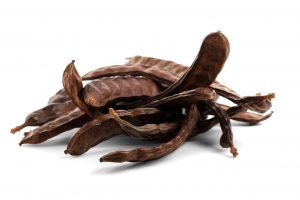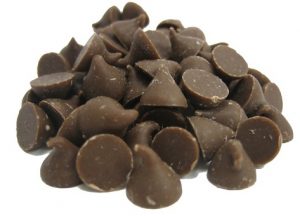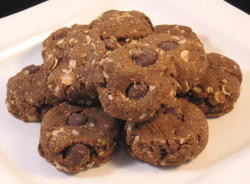
Carob beans or Doggy Chocolate
What is it?
Carob is a great chocolate substitute. Packed with vitamins and naturally sweet, it has a similar taste to chocolate, but without the toxic effects in dogs.
Where does it come from?
It is part of the legume family and comes from the bean-like fruit of the carob tree (Ceratonia siliqua if you want to get fancy).
Why is chocolate bad for my dog?
Chocolate products contain the chemical Theobromine, which dogs cannot metabolize. As a result, it can be quite toxic to a dog when consumed. Eating it could lead to an upset stomach, diarrhea, and vomiting. More serious side effects include high blood pressure, a fast heartbeat, tremors, seizures, and possibly death.
Treat or Meal Type Food?
Use as a treat and offer in small amounts.
Amount:
A few chips is enough.

Only 2-3 chips as a treat every now and then.
Nutrients:
- Vitamins A, B, B1, B2, B3, B6, D, and E,
- calcium,
- fiber,
- pectin,
- iron,
- magnesium,
- potassium,
- manganese,
- protein.
Benefits:
- helps eliminate toxins,
- improve digestion,
- lower cholesterol.
- can be used to treat diarrhea,
- helps treat coughs, anemia, and osteoporosis.
How to feed:
- Plain carob chips.
- Melted carob chips or powdered carob can be used in dog treat recipes.
(Click on the photo below for a carob dog cookie treat recipe!)
Dangers:
- No raw eggs! The raw whites can cause biotin deficiency.
- And be careful of egg shell shards, they are a choking hazard.
Precautions:
- Carob may not be good for a diabetic pooch because of the tannin, which can lower blood sugar and insulin levels. Check with your vet!
- As with all human foods, the most important point to remember is: in moderation. A few carob chips once in a while as a treat is fine, however, too much can lead to minor tummy upset.
More information:
Note: This article is for information purposes only and is not intended for medical advice. Please consult your veterinarian on your dog’s health needs.

